Graphs Show How Skyscrapers Relate to Their Cities–and Whether We Need More of Them
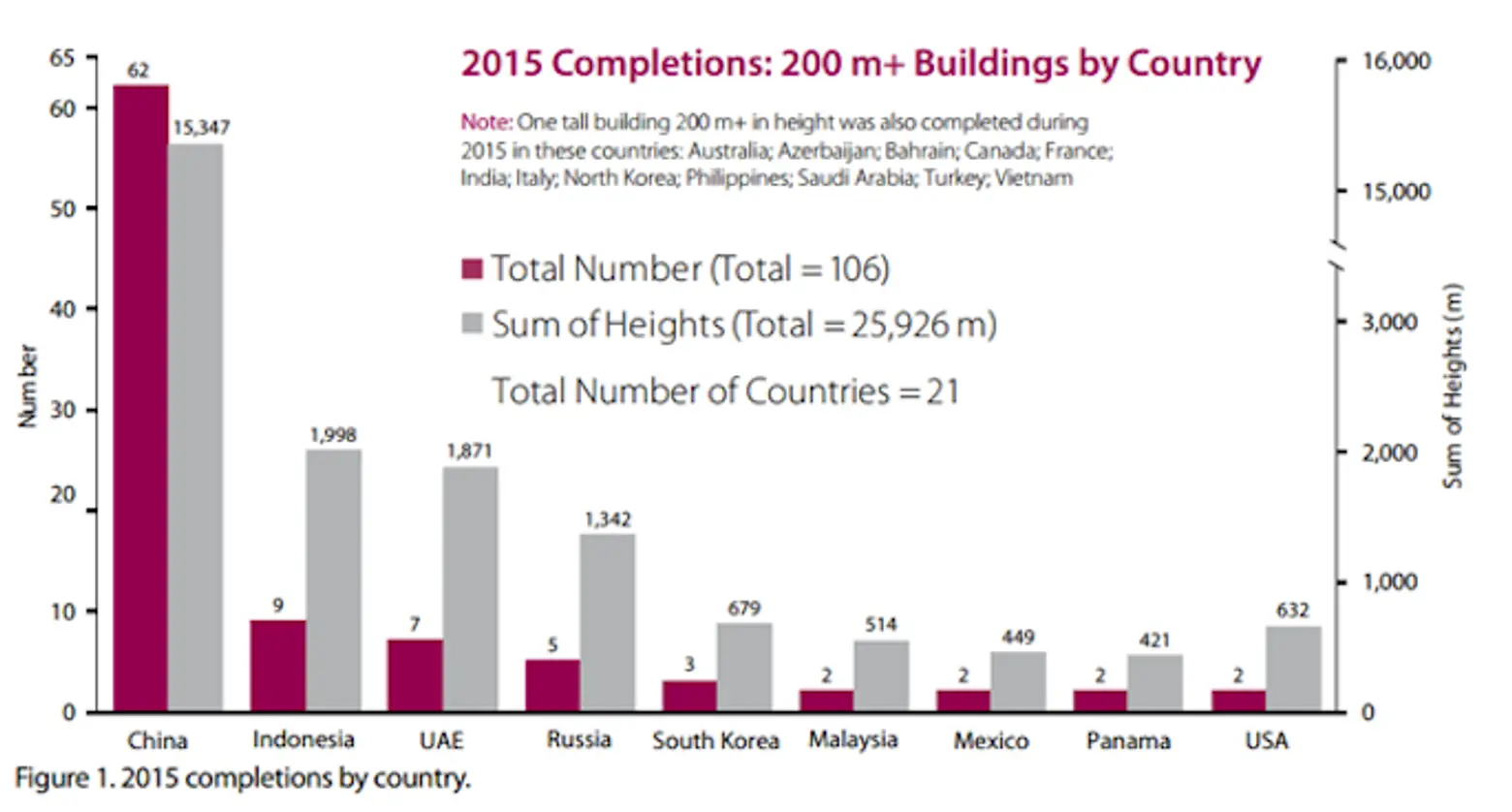
Graph: The Council on Tall Buildings and Urban Habitat
Tall buildings help make cities great. Except when they don’t. Citylab looks at a new study and graphs that show where skyscrapers fit into what makes cities great–and suggests that the middle is where the magic happens.
2015 was a record year for the skyscraper; 106 tall buildings (higher than than 656 feet) went up across the globe, according to The Council on Tall Buildings and Urban Habitat (CTBUH), more than in any previous year; emergent countries that appeared at the forefront of the global economic stage with the dawn the 21st century (China, Indonesia, UAE, Russia) show a big uptick in building upward. The majority of newly-built skyscrapers have risen in Asian nations—especially China–but the United States is in sixth place, with just two skyscrapers completed in 2015.
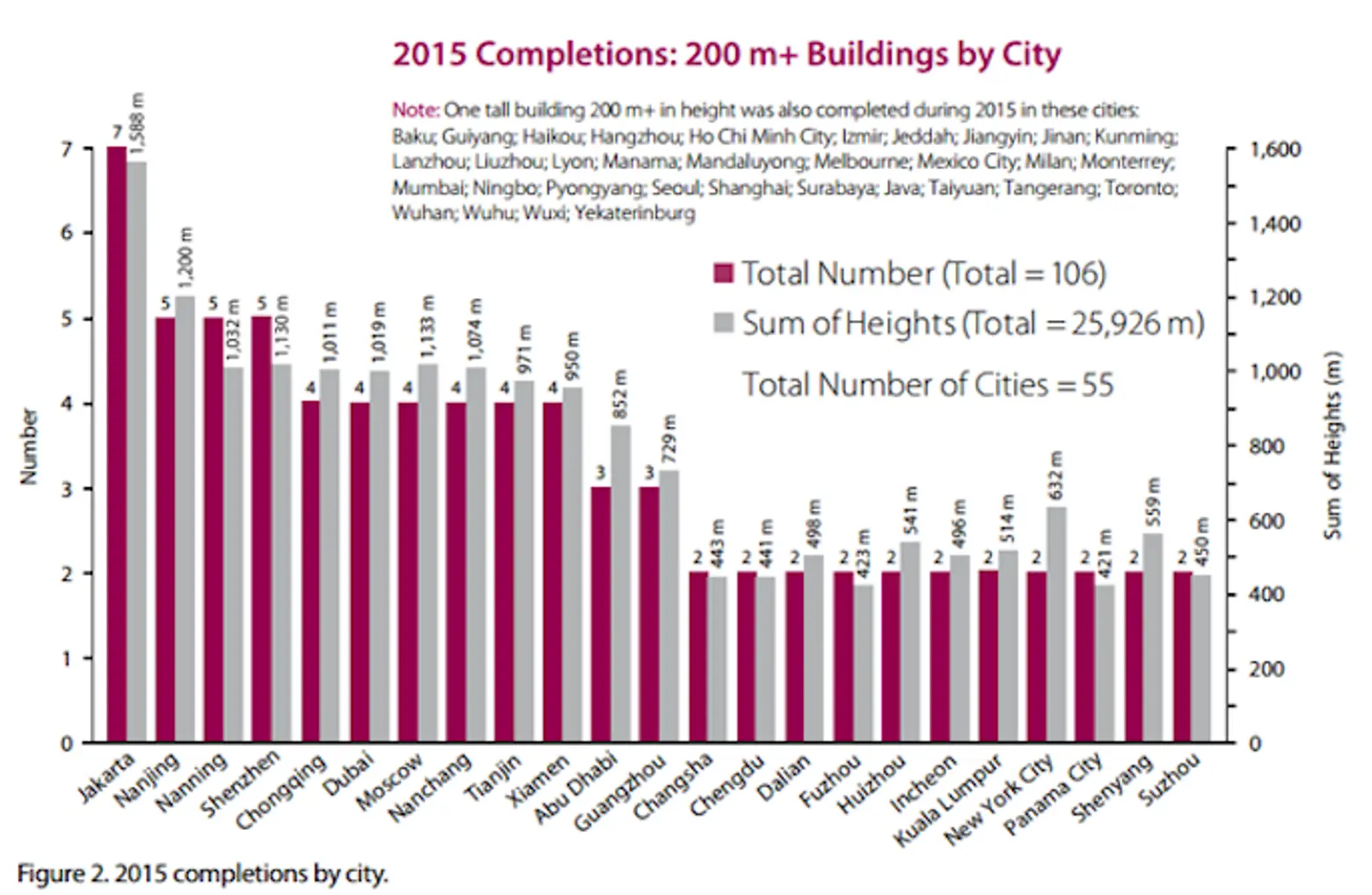 Graph: The Council on Tall Buildings and Urban Habitat
Graph: The Council on Tall Buildings and Urban Habitat
The graphs show skyscrapers by region and by city. While New York City is the only U.S. city to make an impact, it’s clearly bringing up the rear among the front-runners. That’s not to say that this is a bad thing. The U.S. definitely had its day of skyscraper hegemony–the countries that are showing a notable push skyward were at an entirely different stage of development when U.S. cities were laying the iconic infrastructure of tall towers that helped define us in the 20th century. And we’re definitely still in the game of skyscraper-building. But are our supertall contributions doing us any good?
Architecture critic Carter Horsley discussed the topic on 6sqft in light of the controversy surrounding the planned skyscraper at One Vanderbilt, the first project to take advantage of the city’s new East Midtown Rezoning: “Historically, New York has inched upwards with great consistency, and only very rarely in great leaps. The great leaps have been, by and large, up to now, fine architecture: the Metropolitan Life Building, the Woolworth, Chrysler and Empire State Buildings, the Emery Roth towers on Central Park West and the World Trade Center. Tall buildings are a very important part of New York’s character and spirit especially when they are magical. Great architecture amazes.”
Citylab points to a recent study (PDF) that examines the way skyscrapers relate to city size by putting together a database of the height and shape of city buildings in the North American cities shown in the table below.
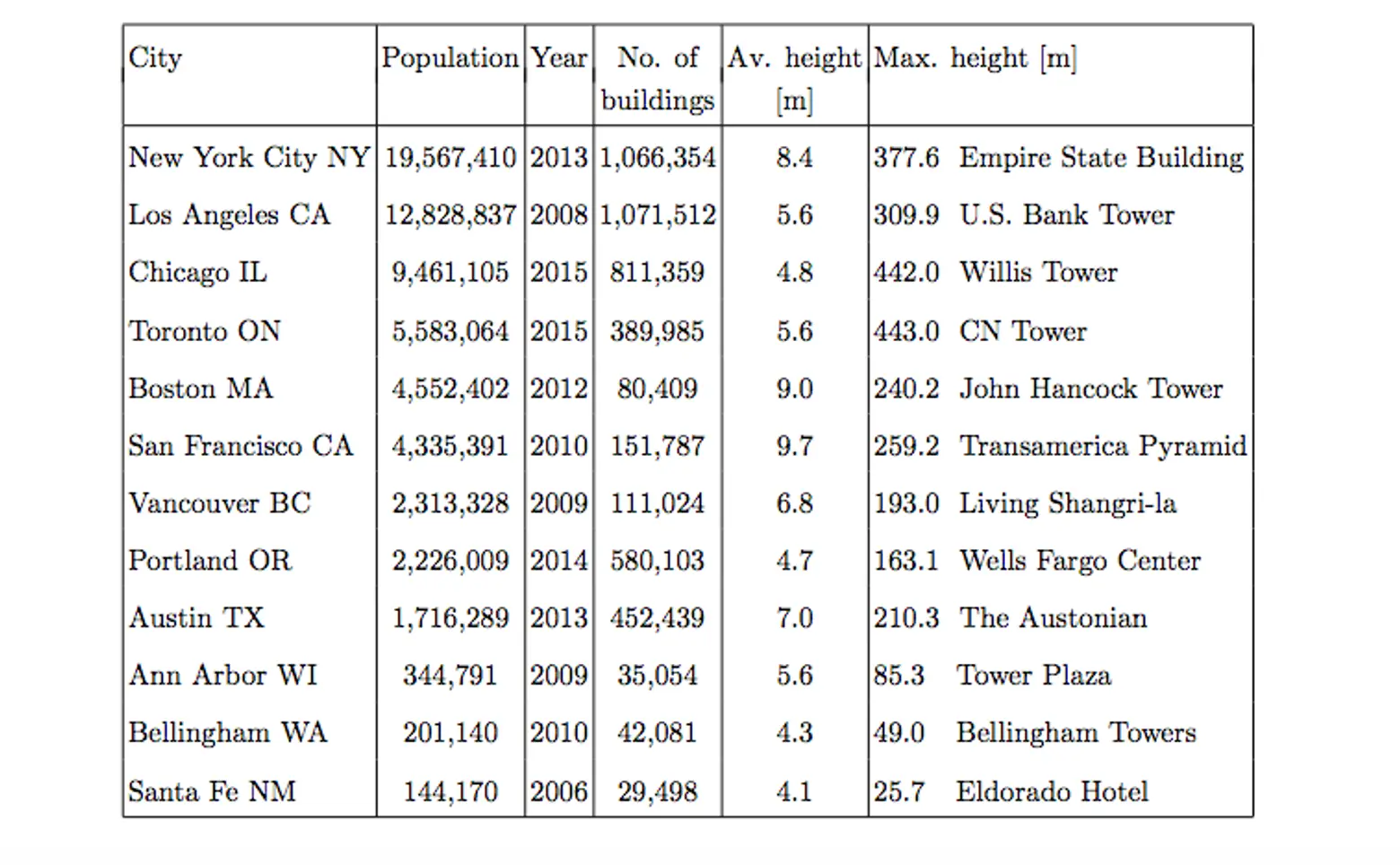 The results are somewhat surprising: San Francisco has the largest average building height, about 32 feet or three stories; Boston is next, followed by New York in third place. But a city can have a relatively tall average building height and not boast many tall buildings. The maps below show the distribution of buildings by height for six U.S. cities.
The results are somewhat surprising: San Francisco has the largest average building height, about 32 feet or three stories; Boston is next, followed by New York in third place. But a city can have a relatively tall average building height and not boast many tall buildings. The maps below show the distribution of buildings by height for six U.S. cities.
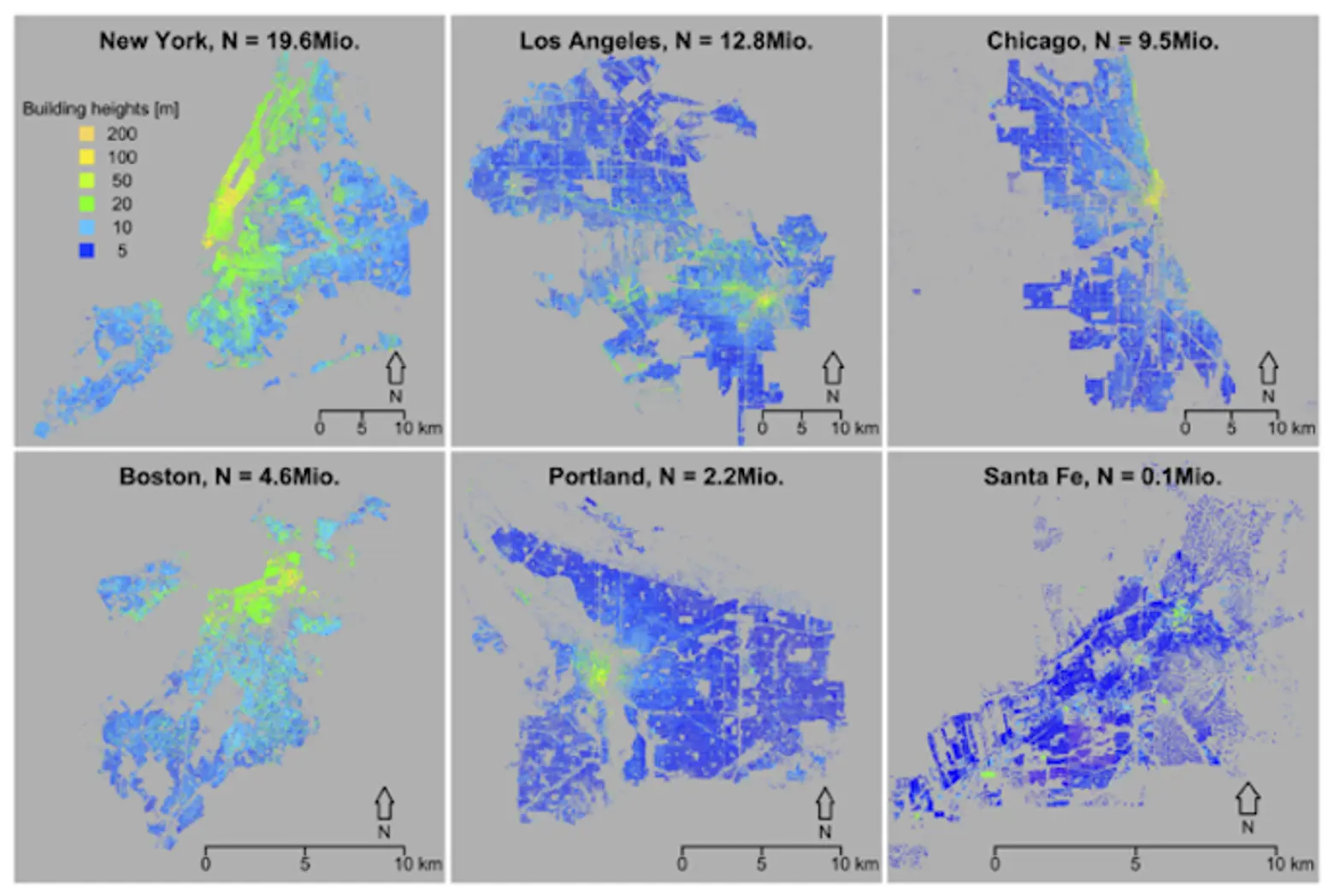
The study finds a connection between the size of cities and the height of buildings near their cores. In the very center of large cities, the tallest buildings become more “one-dimensional, like needles, creating the famous skylines that are the signatures of cities such as New York or Hong Kong.” The graph below shows this relationship; showing only buildings within two kilometers of a city center.
Some urbanists say America’s cities need more skyscrapers because they add density which helps offset steep housing costs, or that dense concentrations of tall buildings are more energy-efficient than suburban sprawl. But they also create new problems: “For one, skyscraper ‘canyons’ found in Asia’s cities can create a type of vertical sprawl that suppresses the innovation that comes from street-level interaction. The most innovative districts in the world remain older industrial neighborhoods, such as Chelsea and Tribeca in Lower Manhattan, Cambridge (near M.I.T.) and parts of Boston…These areas boast an abundance of mid-rise, open-floor plan, historic buildings that create street-level interaction, where people and ideas can combine and recombine to form new innovations and startup companies.”
And of course there’s the stigma attached to the new skyscrapers being built in New York City: They’re becoming places where the world’s super-rich park their money, which cancels out the innovation that comes with the diversity and human interaction that define city neighborhoods.
It’s noted in the study that, “You can read the intensity of socioeconomic life from a city’s skyline…The virtue is in the middle,” in the combination of vibrant city neighborhoods and tall-enough skyscrapers. “Like anything else, skyscrapers are a good thing in moderation: Done right, they contribute to the vital mix of great cities.”
[Via Citylab]
RELATED:
Interested in similar content?
Leave a reply
Your email address will not be published.
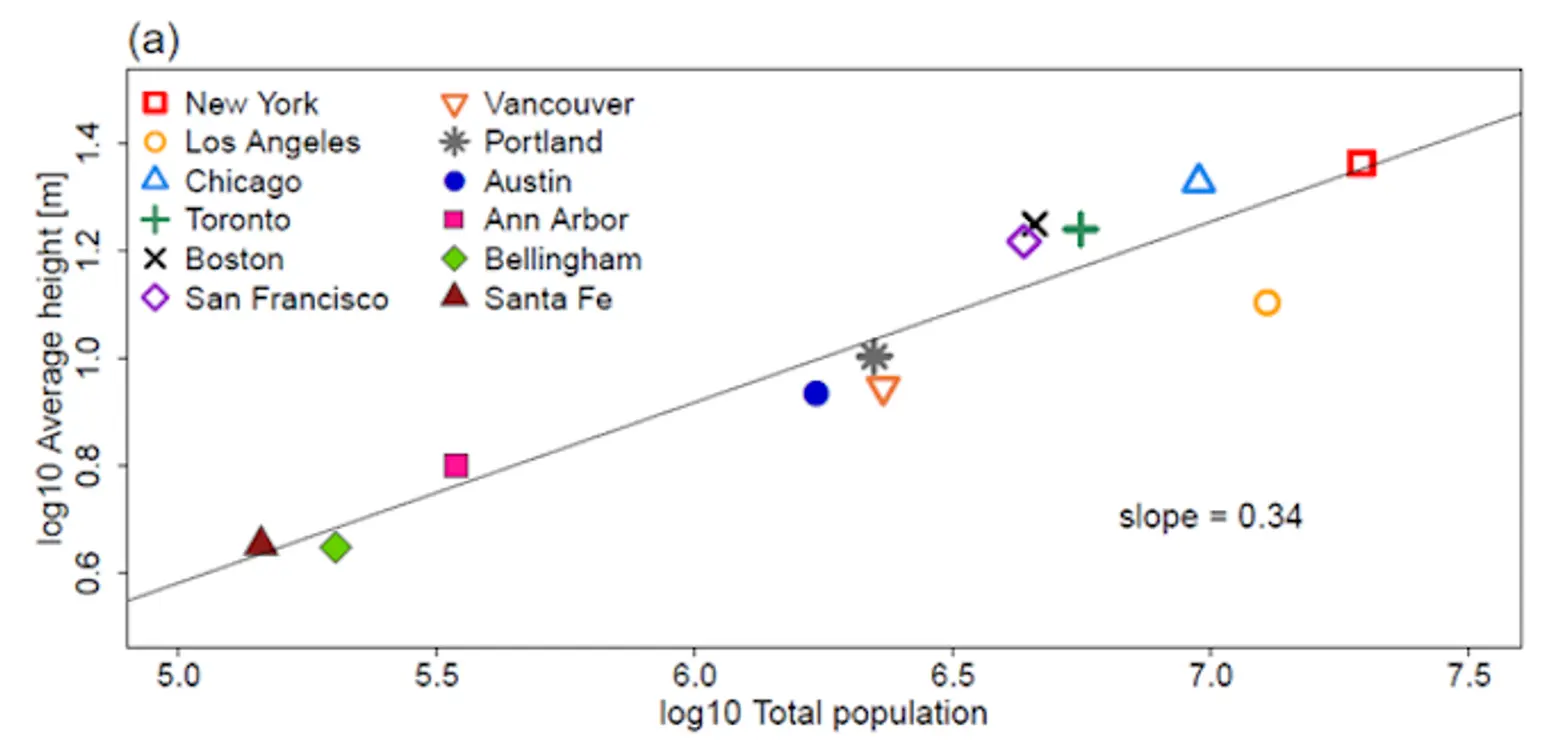
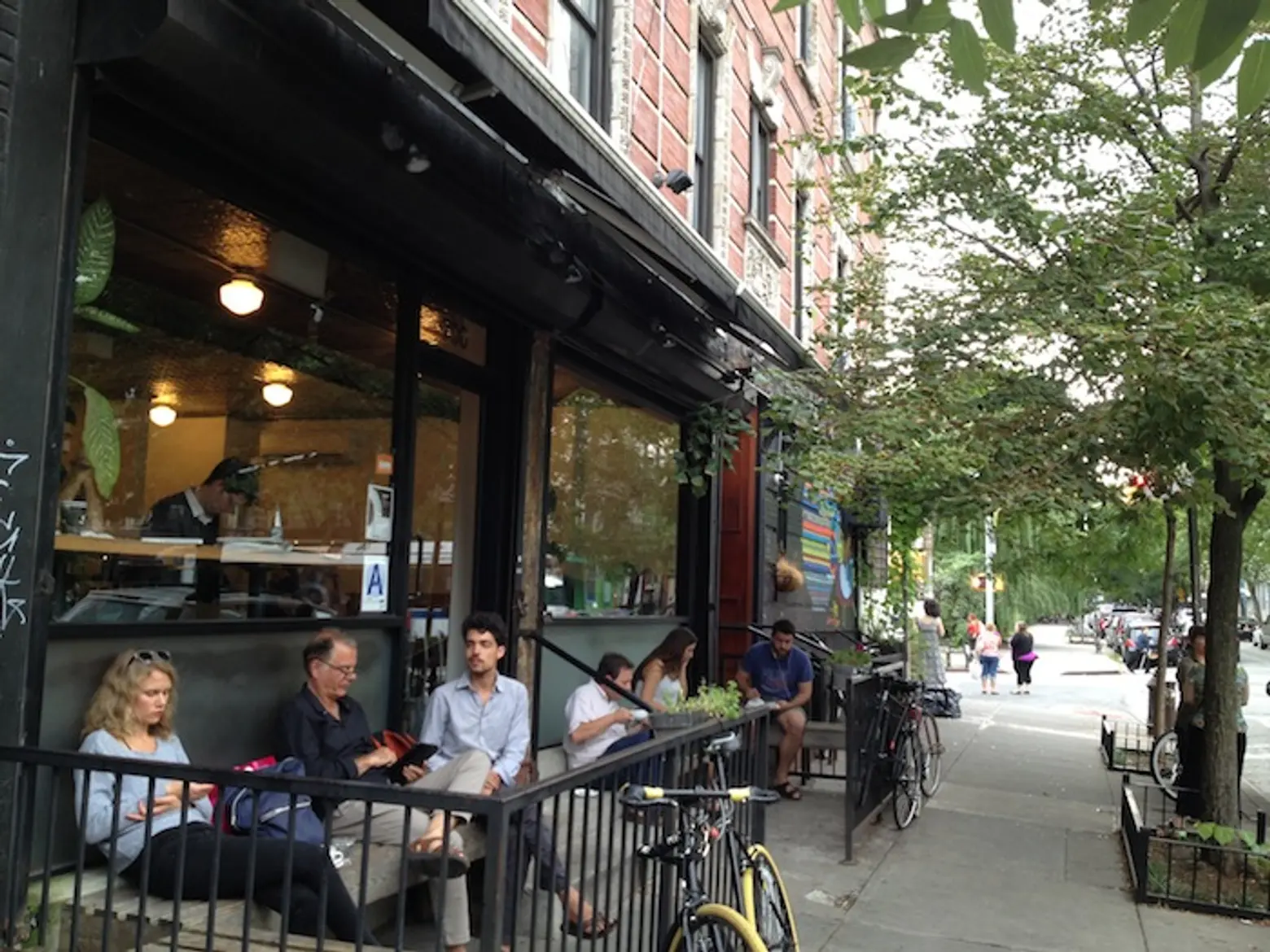
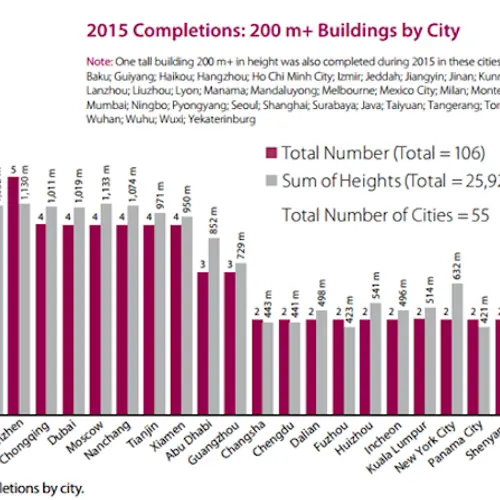
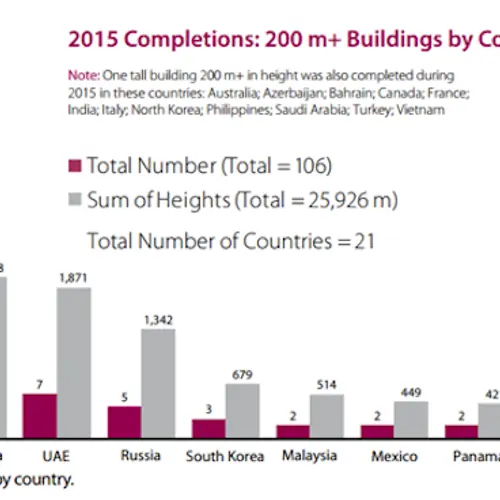
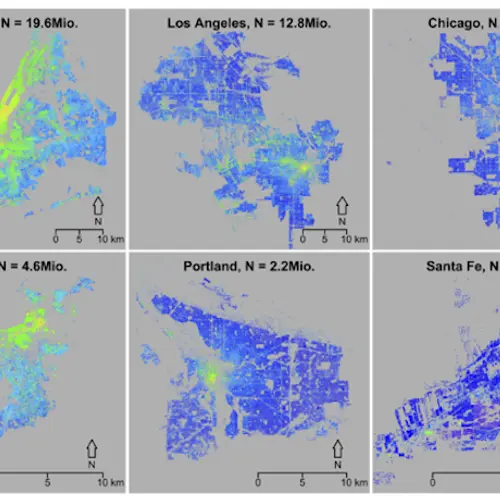
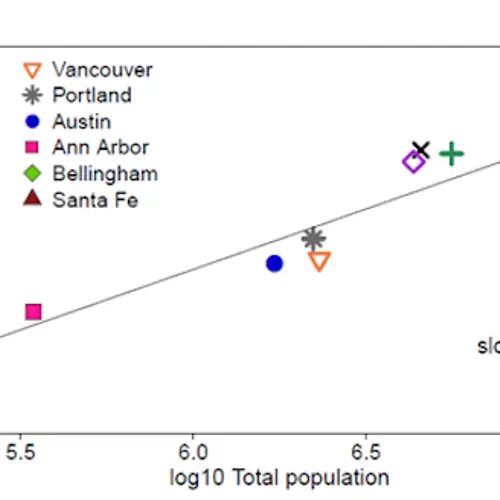
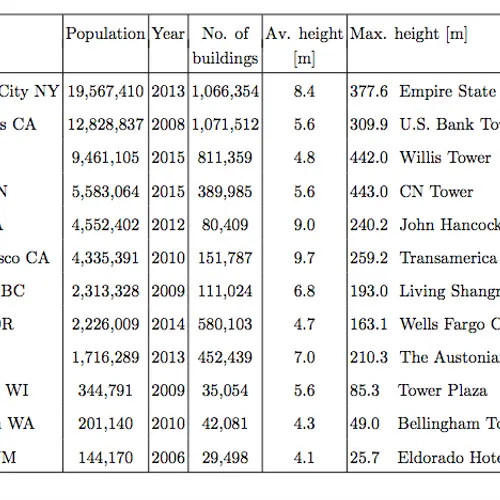





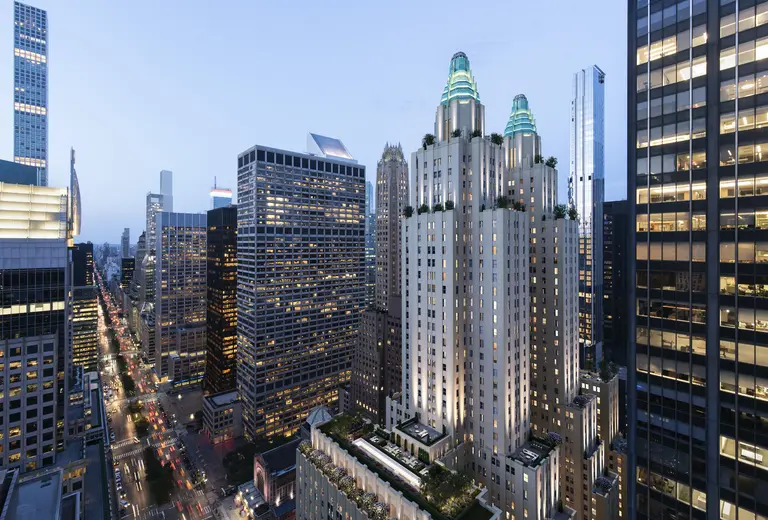







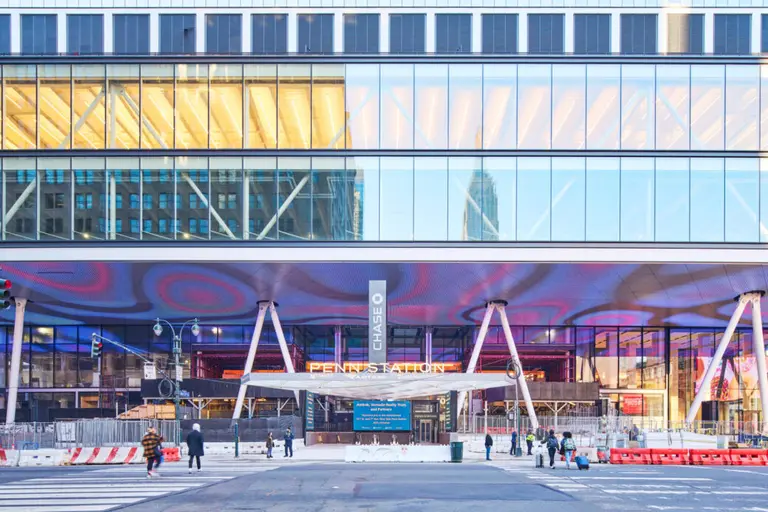













As a Torontonian, I would like to comment that the Maximum height of the CN Tower is 555 Metres or 1815 feet. Yes, way taller than anything else in North America.